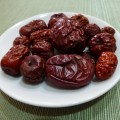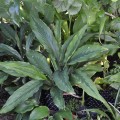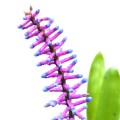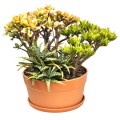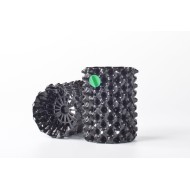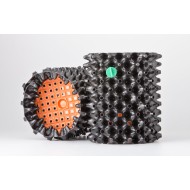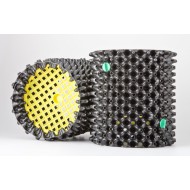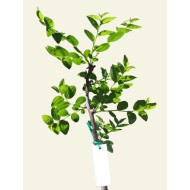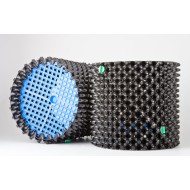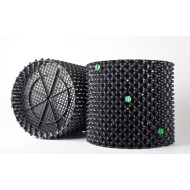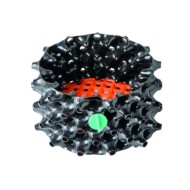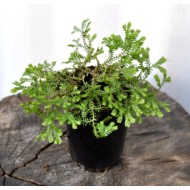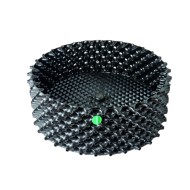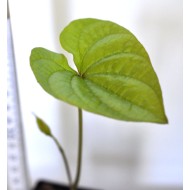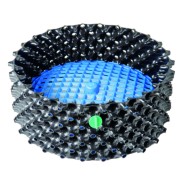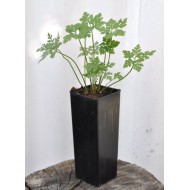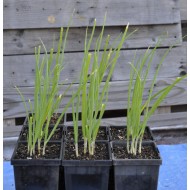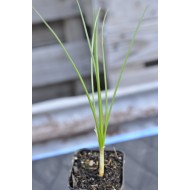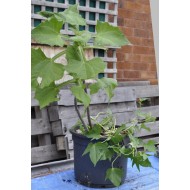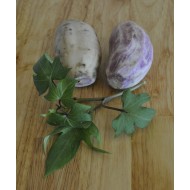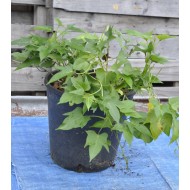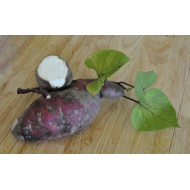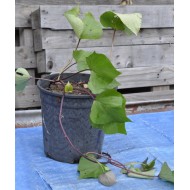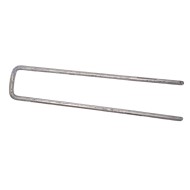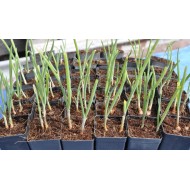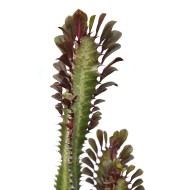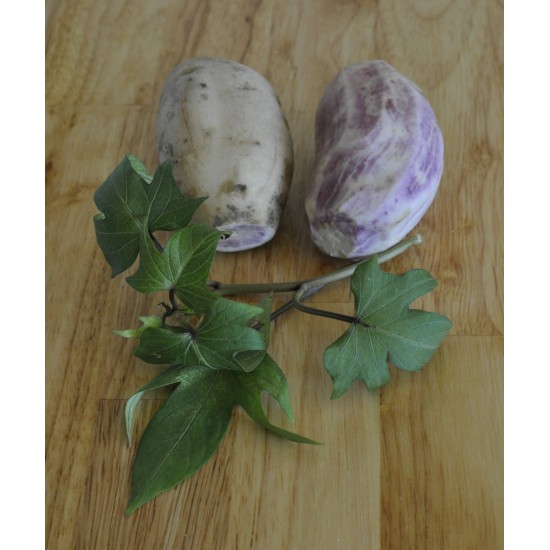
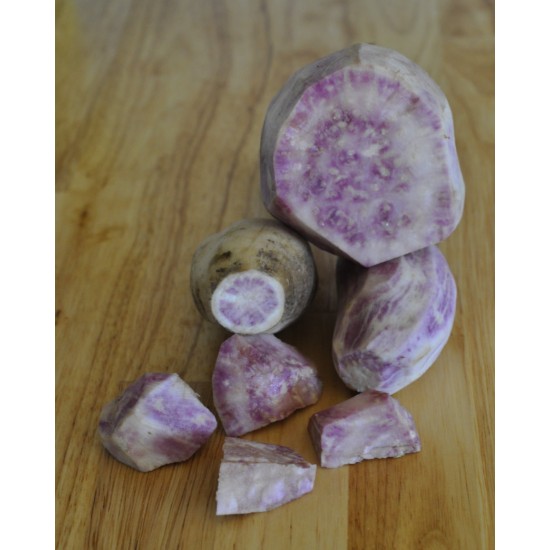


- Stock: Request Propagation Material
- Model: sweet-potato-Hawaiian-Sunshine-propagation-material
Family: Convolvulaceae (includes sweet potato, water spinach, and Morning Glory species)
Genus: Ipomoea (includes water spinach)
Botanical/Binomial Name: Ipomoea batatas
Meaning of Name:
Ipomoea, from Ancient Greek ἴψ (ips, ‘woodworm’) + ὅμοιος (hómoios, ‘resembling’); and
batatas, from Taíno (a Caribbean language) batata (‘potato’)
Common Names: Sweet Potato, Kumara
Cultivar: Hawaiian Sunshine
Botanical Characteristics: Herbaceous | Perennial | Evergreen | Frost tender
Propagation: Cuttings | Sprouting shoots (‘slips’) from tuber | Separation of rooted layered stems
Item Description:
PROPAGATION MATERIAL PROVIDED ON REQUEST
The Hawaiian Sunshine sweet potato cultivar can be purchased here if in stock.
The plant’s stems are green, the leaves are palmate (hand-shaped), and the edible tuber it grows has white skin and purple and white flesh as per the second photo.
The price listed here for propagation material is an indication only, and the actual price may vary depending on your requirements. I am most happy to discuss your needs with you, and supply accordingly.
Plant Description:
This plant will really take off once planted into something larger, like a potato bag or enclosed garden bed. I don’t recommend growing it in the ground unless you have a lot of room, as this is a very long, sprawling, climbing vine.
Having said that, this is an excellent plant to let sprawl over any area you wish to improve on down the track — the large leaves and thick intertwining growth suppresses weeds and the large tubers break up hard soil.
Just be aware that this vine will sprawl, climb and smother anything in its path if left unchecked, and that stems will root along the ground.
The tubers are drier and less sweet than the popular orange sweet potato, which makes them an excellent potato substitute in casseroles and the like.
The purple colour holds in cooking and adds interest to a dish.
The leaves are highly nutritious and we personally eat more leaves than tubers. We eat them cooked, as for spinach or kale. Sweet potato leaves wilt and cook more quickly, and can be added closer to the end of cooking. When finely shredded they make the best quesadilla with shredded cheese and finely sliced red onion!
Growing Information:
Sweet potato is s sprawling, fast-growing vine in warm weather, and will climb at every chance, so take this into consideration when planting. It will slow down over winter, and possibly die back a fair bit in temperate climates, with leaves and stems turning yellow. Some stems and foliage should remain green, and if it gets through a temperate winter the first year, it should acclimatise more and more each passing year.
It takes 90-100 days to grow a tuber, but the leaves can be eaten at any time.
Sweet potato will not survive areas with very cold winters and frosts, and is best propagated on from cuttings or tubers if they can be kept warm over winter ready for planting out in spring.
The best time to harvest tubers is when the foliage begins to turn yellow. Growth will slow if not completely stop from this point on, and the whole plant will die if subjected to frost.
If harvest of tubers is delayed, the plant will simply draw on the energy stored in them to feed itself and get through winter or until frost takes it out. Tubers left in the ground for too long often deteriorate if not outright rot.
Propagation is quite straightforward. Stems will root in place along the ground, and it is a simple matter to cut either side and uplift the rooted section. Cuttings strike readily from nodes buried in soil or immersed in water, and if kept in a warm spot with bright indirect light. Roots and shoots will develop from a tuber partially submerged in water.
Local pick-up is welcome — we’re in Gwynneville, near Wollongong University.
Pick-up is by mutual arrangement please, as we don’t have a shopfront.
Having said that, we are always here and more often than not can easily fit in with whichever day and time suits you best!
Feel free to suggest preferred pick-up time(s) in the comments box during checkout and we’ll reply as soon as we see the notification.
Especial Note Regarding Large Air-Pot® Orders
Depending on the order, we may suggest that large Air-Pot® orders are best sent directly to you from the warehouse.
Especial Note Regarding Jujube Trees
When posting out bare-rooted jujube trees, we routinely trim them to fit the box and keep postage costs to a minimum. These trees are typically knee-high when planted out, though some may be smaller.
This of course doesn’t apply for pick-ups, and in fact we will set aside the tallest trees specifically for this purpose. These trees can often be hip-high, and sometimes taller again.
Please note that this is not a guarantee, as heights of different cultivars can differ from year to year.


